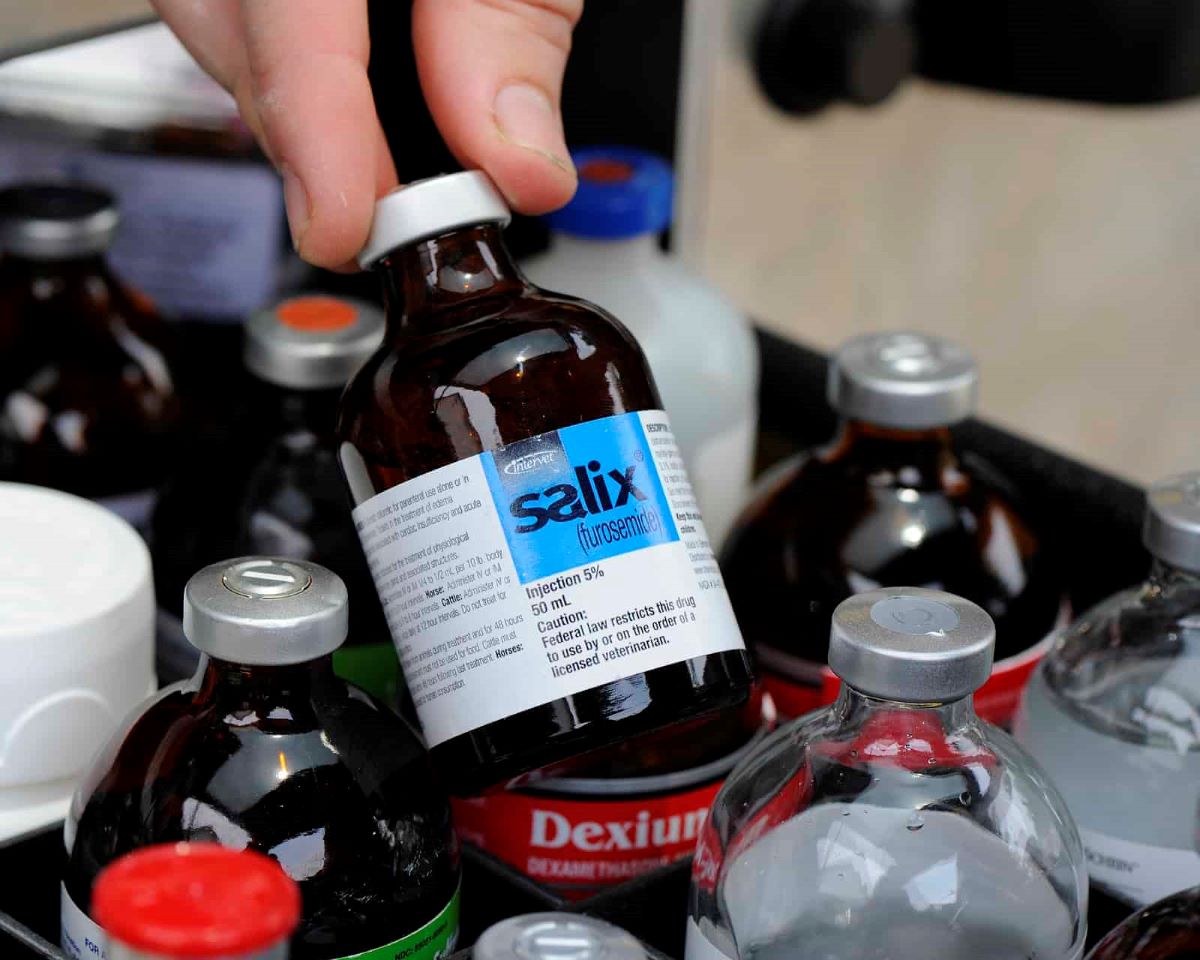The 2021 Kentucky Derby and Kentucky Oaks will mark the first time in the history of those prestigious races that horses may run without furosemide, better known by its brand name Lasix.

The ban on the powerful anti-bleeding medication, widely employed at tracks all over the country, extends to the “Road to the Kentucky Derby†points races. Those 36 races, broken up into the 20-race “Prep Season†and the 16-race “Championship Season,†will also run Lasix-free.
Horses will only gain points toward the 2021 Derby or Oaks if they run without Lasix in those Derby/Oaks Trail races.
Some estimates suggest upwards of 95% of horses racing in 2019 used the anti-bleeding medication. Its use helps prevent respiratory bleeding in a horse’s lungs, or Exercise-Induced Pulmonary Hemorrhaging (EIPH). That’s a common side-effect of heavy exertion in horses.
Optics of the Lasix Needle Don’t Look Good for the Sport
The recent wave of horse deaths at tracks across the country created a perception problem leading to the creation of the Thoroughbred Safety Coalition.
That group, a consortium of the biggest tracks in the country – including Santa Anita, Gulfstream Park, and Churchill Downs, among others – instituted a series of guidelines and reforms. Among those was a gradual phasing out of Lasix.
Already, most tracks banned its use for 2-year-olds. Next year, the ban extends to 3-year-olds, which – of course – encompasses the Triple Crown races.
Does Lasix Enhance Performance? Questions Persist
The debate surrounding Lasix goes beyond optics. Some claim it’s a performance-enhancing drug because furosemide is a diuretic. Within minutes after getting a $20 Lasix shot, a horse has to urinate, often losing upwards of 20 pounds of water weight in the process.
Trainer Kenny McPeek told WAVE-TV in Louisville that he believes Lasix is a PED, and that not every horse needs it before a race. He said trainers use Lasix because everyone else is using it and they feel not using it puts horses at a disadvantage.
“I think the fact you drop water weight, the less a horse weighs theoretically, the faster it should be able to run,†McPeek said. “Would that be performance-enhancing? Yes, probably.â€
Diuretic Properties Plays a Key Role With Lasix
Fellow trainer Dale Romans begs to differ. He has a problem with describing Lasix as a PED, saying he’s never seen a situation where the drug either harmed a horse or enhanced his performance.
“It will not make a horse run faster than it is capable of running,†Romans told WAVE-TV. “Losing the water weight is what makes it work. And it makes it where they don’t hemorrhage in their lungs. And that’s a proven fact of a problem we have in horse racing.â€
Kentucky also took further steps on the drug front on Tuesday. The Kentucky Equine Drug Resource Council, one of the primary advisors to the Kentucky Horse Racing Commission, pushed forward a provision that would require horses that have taken clenbuterol to spend 21 days on the veterinarian’s list. Afterward, a clean drug test would be required before the horse can race again.
Unlike Lasix, There’s Little Debate About Clenbuterol
Vets administer clenbuterol, or “bute,†to relax airway muscles and clear out obstructions in air passages. At the same time, some trainers claim the drug – while not a steroid — is being misused because of its steroid-like effects, which include lean-muscle construction.
Trainer Mark Casse wrote in a Thoroughbred Daily News op-ed earlier this year that clenbuterol is “the most abused drug in our industry.â€
This explains why the World Anti-Doping Association banned clenbuterol in all human sports.
Currently, Kentucky has a 14-day waiting time between the drug’s usage and race day. The new rule would expand that by a week.
Kentucky Late to the Banning ‘Bute Parade
Kentucky isn’t the only state considering cracking down on clenbuterol. The New York State Gaming Commission voted on Monday to require that vets seek permission from a track’s equine medical director before administering clenbuterol. Along with that, horses would need to test clean for the drug before being allowed to run.
The Maryland Racing Commission proposed a new rule requiring horses pass a drug test before running. And Canada pushed its threshold for clenbuterol administration to 28 days earlier this year.
California is ahead of all of them. That state passed a clenbuterol ban in 2018, forbidding any horses from testing positive for the drug on race days.











